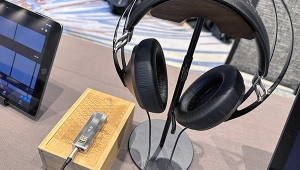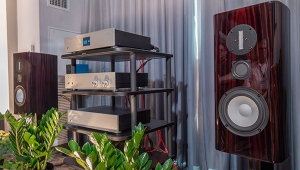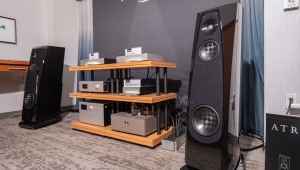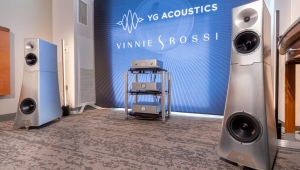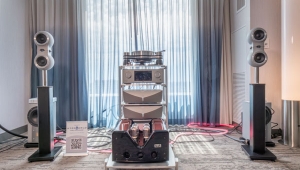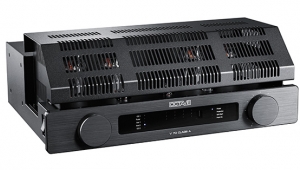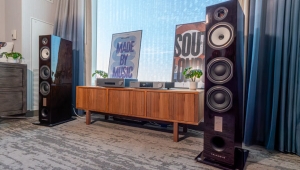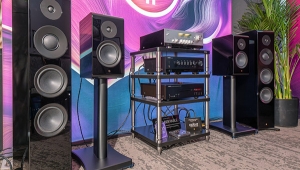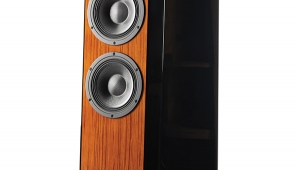| Columns Retired Columns & Blogs |
To Be or Not to Be
I'm scared. I've just returned from a visit to the isle of my birth, Manhattan. As the spouse and I walked to Stereophile's offices to meet John Atkinson and Stephen Mejias for dinner, we passed some of the most valuable real estate in the country. It was hard to imagine that, if global warming continues at its current, ever-accelerating pace, the buildings we were marveling at will soon be below sea level.
Footnote 1: I wrote about the then-imminent advent of RoHS in Stereophile's August 2005 eNewsletter.—John Atkinson
Today, back in the pseudosafety of my office in hardly placid Oakland, California, I gaze at the headlines on Yahoo.com's front page: "Cyclone Kills 10,000 in Just One Myanmar Town." "Tropical Insects Risk Extinction With Global Warming." "Richmond Chemical Spill Reaches San Pablo Bay." "Oil Hits Record Above $121 On Supply Worries." I recall watching the President of the United States on C-Span repeatedly tout "clean, safe nuclear power" as a solution to the energy crisis. Grinding on relentlessly in my head is Philip Glass's score for director Godfrey Reggio's brilliant, emotionally devastating film Koyaanisqatsi (1983), in which music and images perfectly mesh to convey the consequences of a "life out of balance" (the meaning of the Hopi word).
There is no way I can pretend that global warming is a fantasy, and that our current over-reliance on fossil fuels is anything but sheer folly. The economy and geography of some island nations, as well as Bangladesh, are already in jeopardy; severe climate changes compounded by pollution are wreaking havoc with food and water supplies; people are rioting over the prices of rice and bread; and any number of life forms and species are feeling a heat that is far more than metaphoric. Every credible scientific study I encounter suggests that the consequences of global warming will be far worse than we first thought.
What's especially crazy is that some of the major efforts to preserve dwindling resources and reduce carbon emissions are having unforeseen negative consequences. After the San Francisco Chronicle ran a huge story warning readers never to dispose of mercury-containing, energy-efficient compact fluorescent light bulbs in landfills, and to immediately open windows and don protective gear before cleaning up broken CFL bulbs, I swore to stick to incandescent bulbs and candlelight. Now grain shortages are worsening because farmers are plowing over their rice fields to plant genetically modified corn to be processed into ethanol. It goes on and on.
The question I constantly ask myself is, What can I, as an audiophile and music critic, do to change all this?
First, I can support green legislation and industry-wide changes. I'm heartened that several major environmentally friendly audiophile initiatives have begun to address global warming. One, which arrived courtesy of the European Union, is the Restriction of Hazardous Substances (RoHS) Directive, which requires that any manufacturer wishing to sell its products in Europe must greatly reduce, if not eliminate entirely, six hazardous chemicals from those products: lead, cadmium, mercury, hexavalent chromium, polybrominated biphenyl (PBB), and polybrominated diphenyl ether (PBDE) flame retardants (footnote 1).
At the start of 2008, the Consumer Electronics Association (CEA) took major steps to create a greener annual Consumer Electronics Show. As Stereophile reported online on November 25, CES 2008 featured increased recycling efforts, improved energy efficiency, and a major effort to offset the trade show's carbon footprint via investments in certified renewable-energy, reforestation, and energy-efficient projects. Of the food containers and utensils used at CES 2008, 75% were fully biodegradable, and all light bulbs, batteries, and electronics used at the event were recycled and kept out of landfills. Also in use were recycled carpets and paper, soy-based inks, and nonhazardous cleaning solvents and soaps. Nonetheless, according to one report, the entire green-technology display on the CES show floor amounted to no more than a few booths dedicated to sustainable technology (footnote 2). More needs to be done.
Currently in the US, no national laws deal with the e-waste that results from discarding computers, circuit boards, and electronics gadgets; only eight states have laws that require electronics manufacturers to take products back and recycle them. Many old computers are shipped to China, where underpaid workers in squalid conditions melt down the toxic metals to be resold, as children are exposed and local rivers run black (footnote 3).
To begin to address this situation, the CEA has established MyGreenElectronics.org. Besides its database of green products, and an energy calculator that enables you to determine how much energy your electronic components use, the website advocates a national recycling programming for electronics. Something must be done before the switch to digital TVs, when people start dumping their old CRT-based analog TVs anywhere and everywhere (footnote 4). I hope that any new legislation will include safeguards against exporting hazardous nuclear and chemical waste overseas, or sending it to domestic prisons to take advantage of cheap labor (footnote 5).
It's heartening to learn that Panasonic, Sharp, and Toshiba have formed the Electronic Manufacturers Recycling Management Company. Hewlett-Packard has pledged to reduce the energy consumption of desktop and notebook PCs by 25% by 2010 (footnote 6). Fujitsu has announced a new PC, 50% of whose body shell is made from corn-based polymers. Although the unit is not biodegradable, manufacturing with corn cuts down on carbon-dioxide emissions by 50%.
I've promised myself that I will ask every loudspeaker manufacturer I encounter if the wood in their speaker cabinets is sustainably grown on tree farms, if the MDF is free from the outgassing of formaldehyde, and if their finishes are nontoxic and lead-free. Is the high-gloss plastic in some components free from the bisphenol-A and phthalates that have been identified as endocrine-system disruptors? Are the chips, resistors, capacitors, and circuit boards in the products I use and review manufactured in an environmentally conscious manner? Is worker health a given? If the answers to any of these questions is unsatisfactory, I'm determined to buy and/or review products made by other companies.
In the July 2007 Stereophile, a speaker manufacturer was quoted as saying, "My wife scolds me that this might be an endangered wood, and hence politically incorrect. .†.†. But they chopped down the tree anyway." (footnote 7). At the risk of sounding like the baby-boom child of the 1960s that I am, I can't help but ask, "What if someone chopped down the tree but no one bought it?"
Here's my bottom line: By the time 2030 rolls around, I still want to be enjoying great music on my audio system, not paddling my dinghy through the streets of Manhattan. I know of no other way to make that possible than doing what I can to reverse our collective madness by making a difference.
Footnote 1: I wrote about the then-imminent advent of RoHS in Stereophile's August 2005 eNewsletter.—John Atkinson
Footnote 2: Ryan Kim, "Watching the big screen—and talking green," San Francisco Chronicle, January 1, 2008.
Footnote 3: Daniel Sieberg, CBS News science and technology correspondent, February 17, 2008.
Footnote 4: The 6 million metric tons (6 billion kilograms) of electrical and electronic waste disposed of in Europe in 1998 included 27,000 metric tons of lead and 8 metric tons of mercury (AEA Technology figures). The lead used to shield the CRTs in TVs and computer monitors is of particular concern because it is in a soluble oxide form that is readily leached from landfills.—John Atkinson
Footnote 5: Read "The Electronics Recycler's Pledge of True Stewardship."
Footnote 6: Intel's latest chip, the Silverthorne, requires a tenth the power of existing chips.
Footnote 7 Dick Sequerra of Sequerra Associates Ltd., quoted in Sam Tellig's "Sam's Space," Stereophile, July 2007, p.25.
- Log in or register to post comments

















